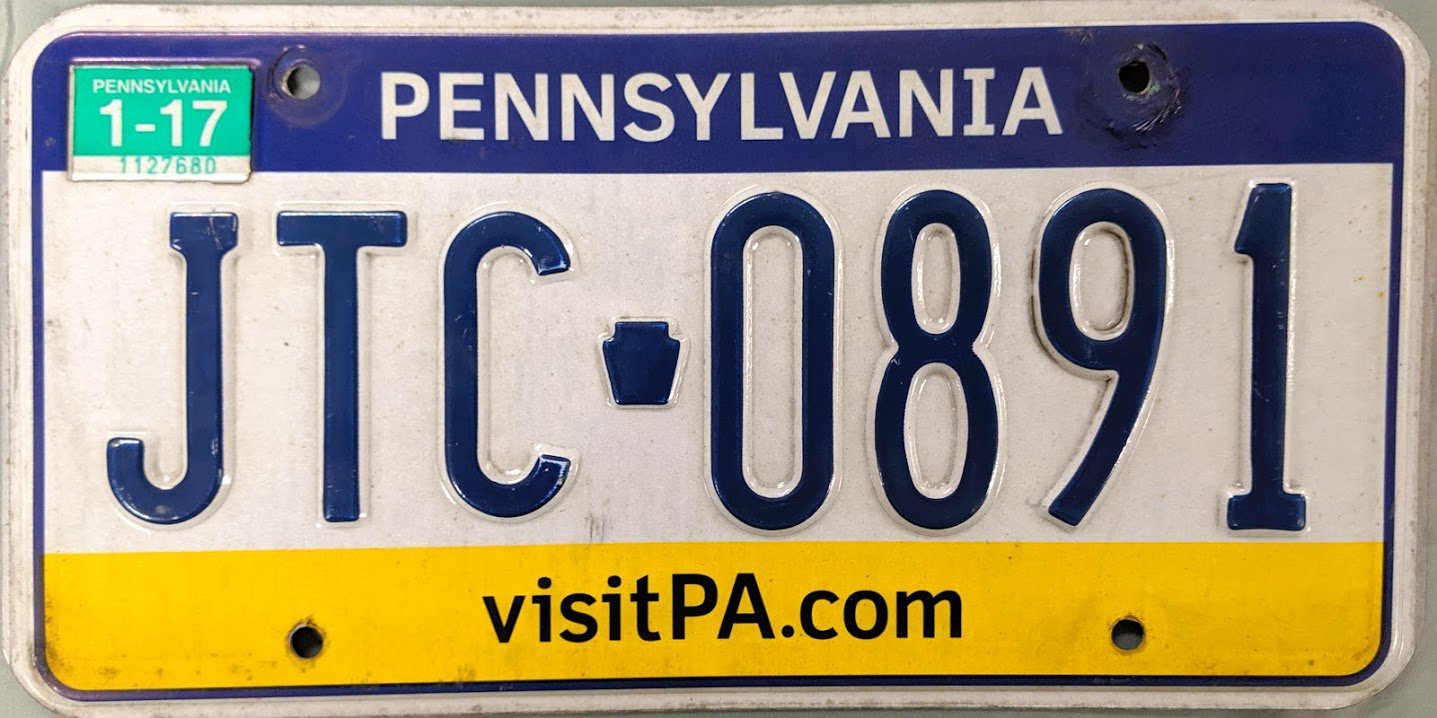Pennsylvania License Plate Design and History

Pennsylvania license plates have undergone several design changes throughout history, reflecting the state’s cultural heritage, technological advancements, and changing aesthetic preferences.
The first license plates issued in Pennsylvania in 1906 were simple metal tags with black lettering on a white background. Over the years, the design has evolved to include a variety of colors, symbols, and fonts.
The Pennsylvania license plate has been redesigned several times over the years. In 2022, the state introduced a new license plate design that features a white background with blue and gold lettering. The new plate also includes a reflective strip on the bottom that helps to improve visibility at night.
For more information on the new PA license plate, please visit here. The Pennsylvania license plate is an important part of the state’s identity, and the new design is sure to be a welcome addition to vehicles across the Commonwealth.
Colors
The colors used on Pennsylvania license plates have varied over time. In the early years, plates were typically white with black or blue lettering. In the 1950s, the state began issuing plates with a yellow background and black lettering. The current design, introduced in 2010, features a blue background with white lettering.
Pennsylvania license plates come in various types, including the standard issue and personalized plates known as vanity plates. If you desire a unique touch to your vehicle, consider creating a pa vanity plate. With a vanity plate, you can display a custom message or combination of letters and numbers that reflects your personality or interests.
The process of obtaining a vanity plate in Pennsylvania is straightforward, making it a popular choice for drivers seeking to add a personal flair to their vehicles.
Symbols
Pennsylvania license plates have featured a variety of symbols over the years. Some of the most common symbols include the state seal, the Liberty Bell, and the Keystone Bridge. The current design features the state seal in the center of the plate, with the Liberty Bell and the Keystone Bridge on either side.
Fonts
The fonts used on Pennsylvania license plates have also changed over time. In the early years, plates were typically printed in a simple serif font. In the 1950s, the state began using a more modern sans-serif font. The current design features a combination of serif and sans-serif fonts.
Types of Pennsylvania License Plates

Pennsylvania offers various license plates to cater to different vehicle types and purposes. These plates come with distinct designs, colors, and eligibility criteria.
The primary types of license plates in Pennsylvania include passenger plates, commercial plates, and specialty plates. Each type serves a specific purpose and has its own set of requirements.
Passenger Plates
Passenger plates are standard license plates issued to private, non-commercial vehicles. They typically display a unique combination of letters and numbers and come in two colors: blue and gold.
Commercial Plates
Commercial plates are designed for vehicles used for business purposes, such as trucks, buses, and taxis. They are typically white with blue lettering and include additional information like the vehicle’s weight class and registration number.
Specialty Plates
Specialty plates are optional license plates that allow drivers to display their interests or support certain causes. These plates feature unique designs and often require an additional fee. Some popular specialty plates include:
- Collegiate plates: Display the logo or colors of a particular university or college.
- Environmental plates: Promote environmental awareness and support conservation efforts.
- Military plates: Honor veterans and active military personnel.
- Historical plates: Commemorate historical events or landmarks in Pennsylvania.
Obtaining and Renewing Pennsylvania License Plates

Pennsylvania residents can obtain and renew license plates through the Pennsylvania Department of Transportation (PennDOT). The process involves submitting specific documents and paying applicable fees.
For new license plates, individuals must provide proof of vehicle ownership, insurance, and identity. Fees vary depending on the type of vehicle and plate selected.
Obtaining a New Pennsylvania License Plate
- Gather required documents: Proof of vehicle ownership (title or registration card), proof of insurance, and proof of identity (driver’s license or passport).
- Visit a PennDOT Driver and Vehicle Services (DVS) center or authorized agent.
- Complete the license plate application form (MV-1).
- Submit the completed application form and required documents.
- Pay the applicable fees.
Renewing a Pennsylvania License Plate
License plates in Pennsylvania expire annually. Renewals can be done online, by mail, or in person at a DVS center or authorized agent.
Online Renewal
- Visit the PennDOT website and create an account or log in.
- Select the vehicle to be renewed.
- Follow the prompts to complete the renewal process.
- Pay the renewal fee online.
In-Person Renewal
- Visit a DVS center or authorized agent.
- Bring the current registration card and proof of insurance.
- Complete the renewal form (MV-44).
- Pay the renewal fee.
Cost of License Plates and Additional Fees
The cost of license plates varies depending on the type of vehicle and plate selected. Standard passenger vehicle plates cost $36, while specialty plates have additional fees. Additional fees may also apply for late renewals or personalized plates.